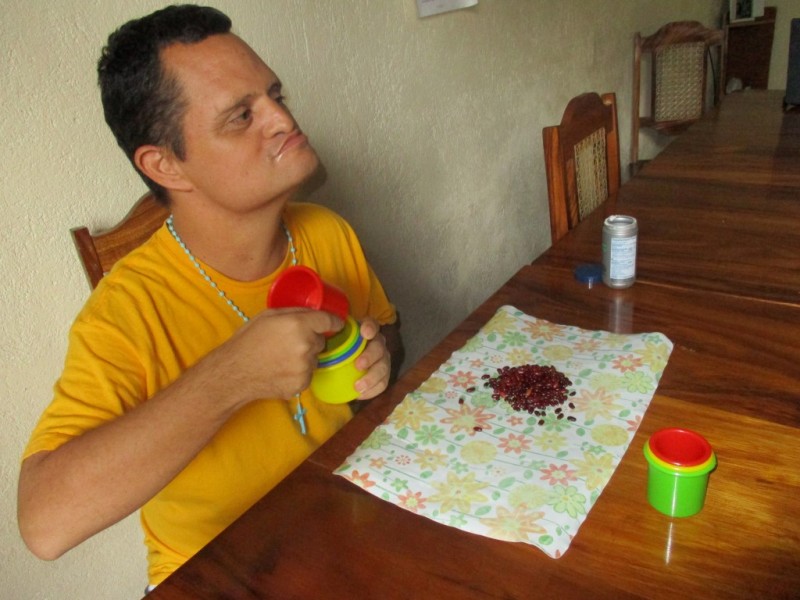This week we evaluated what we have observed and learned about Miguel in the first 6 weeks he has lived with us at the Ruach community.
For us the first stage is one of observing and trying out. This ends with a synthesis of what we have discovered and an initial plan on how we hope to stimulate Miguel’s development. This synthesis is discussed with the resident’s legal representative who can of course make corrections and propose additions regarding the course to take.
Generally speaking a new resident arrives with us with a minimum of information about his/her past. The family usually has little to offer that helps us to get a grip on what approach to take in relating to their family member.
In the context of Nicaragua, the new resident will not have dossiers and records compiled in care institutions as these care institutions do not exist here. So in fact we start with every new resident with a fairly clean sheet.
Activities
In the first week we adopt a ‘wait and see’ approach and follow what the new resident chooses to do. Miguel did not initiate contact himself, but was open to us seeking contact with him. At first he seemed to be more capable than what came out in practice. He was quite passive, physically and emotionally, which made it hard for us to assess what kind of activities he enjoys, although we got some clues in the end: he enjoys sitting outside, quietly looking around him. He doesn’t move from there unless we call him for his food and drink which he adores! He also enjoys our singing: he joins in by waving a tambourine around to make the small side bells tinkle. He also enjoys being in the swimming pool, quietly looking around in his float.
In the second week we offered him some activities to find out what attracts him. Scratching on the white board using a felt tip pen? No. Drawing on a white board? No. (Miguel’s attention was everywhere except where we hoped it would be, and it did not matter to him whether he used the tip or the back of the felt tip pen for the task). Would playing with blocks appeal more to Miguel? Not really. Playing with water, maybe? No luck. Was there anything that could hold his attention? Finally we found that he was able to concentrate on taking beans out of a jar and putting them into coloured plastic containers. So we try to build on this activity. He knows where to find the toys and tools he needs, and put them back, so it is clear he is keen to learn.
A journey of discovery
The next step for Miguel is that we will accompany him to the activities club for another observation period of 6 weeks. Does the club offer anything that could help Miguel’s well-being and development? Our first impression is moderately positive.
Every new resident is a human being full of surprises. We need to discover what his/her talents and gifts are, and how we can support the new resident without breaking the rhythm and tranquillity of the other residents. It is a fascinating learning process, also for our home care assistants, to become more sensitive to the needs of the residents and to learn the art of observing well. Because only in that way we can make the difference for our residents!


